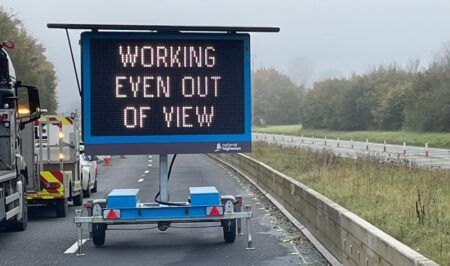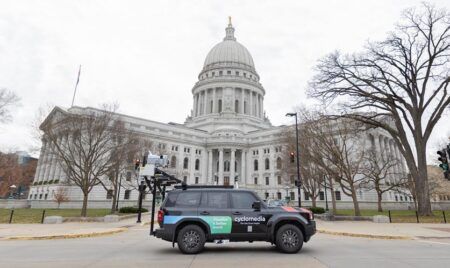A bright idea by Arizona Department of Transportation (ADOT) employees is delivering clearer messages on overhead electronic signs along state highways, while saving taxpayer dollars.
As part of ADOT’s commitment to continuous improvement, employees developed a retrofit kit to replace old halogen light bulbs with state-of-the-art LED lighting for the dynamic message signs (DMS) that provide drivers with information about highway conditions, incidents and travel times. ADOT is a subscriber to the Japanese business philosophy of kaizen or ‘continuous improvement’, which reduces waste, improves safety or, in the case of this employee-driven idea, accomplishes both.
Rather than replacing an older message board at a cost of US$300,000 when the need arises, ADOT crews now replace the original halogen bulbs and mechanical shutters that had been used to create messages. The cost for a retrofit is significantly lower, at about US$42,000 per message board. In use since 2014, the retrofit kit also replaces wiring and upgrades the message board’s control box. Each upgrade replaces 20-year-old technology that requires monthly maintenance. The maker of the existing boards has now gone out of business, so replacement parts are no longer available, providing the agency with additional benefits from the retrofit approach.
The new LED replacement system also uses 60% less energy, resulting in an annual savings of about US$1,000 per sign. A total of 45 message boards in the Phoenix metropolitan area have been retrofitted since 2014, and many other signs around the state have received, or will receive, the upgrade. As ADOT retrofits message boards, drivers get clearer messages delivered by more reliable signage.
Chuck Hill, ADOT traffic signals and lighting supervisor, commented, “The LED system is a brighter, clearer light, so it’s easier to see the signs and read the messages.”
ADOT has also used an innovative new technique to repair and strengthen girders on two I-17 bridges, resulting in one longer listed as ‘structurally deficient’. In an agency first, ADOT has used carbon fiber strips to fix girders on the bridges, which in both cases had been struck by over-height vehicles. Instead of other repair methods, such as injecting epoxy to rebuild sections of the steel-reinforced concrete girders, crews used the Fiber Reinforced Polymer (FRP) strengthening material to wrap the damaged girders.
“We think the carbon-fiber repairs are effective, can extend the lifespan of structures, and can be done in much less time than other repair methods,” said ADOT’s state bridge engineer, David Eberhart.




